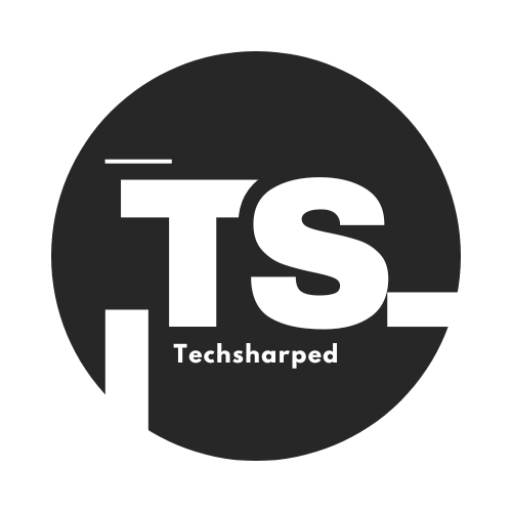Introduction to PIC Technology
The foundation of many contemporary developments is programmed interface controllers, sometimes referred to as PIC technology. From consumer electronics to industrial automation, PIC microcontrollers are everywhere providing flexible, reasonably priced embedded system solutions. Specifically what is PIC technology, and why is it so important in the tech-driven scene of today?
This site explores PIC technology’s beginnings, components, uses, and developing future. This post covers professionals looking for insights and hobbyists investigating microcontrollers.
History and Evolution
Born in the late 1970s, PIC tech originated with the firm now known as Microchip Technology. Fundamentally, PIC microcontrollers were meant to make embedded system programming easier. Early models developed rapidly adding flash memory, better processor speeds, and more choices for connectivity.
PIC microcontrollers first appeared in many consumer gadgets including washing machines, remote controls, and even early cell phones by the late 1990s. Widespread acceptance was made possible by their modest scale, reasonable cost, and energy economy. They are still mainstays of industrial equipment, IoT devices, and more today.
Key Components and Functionality
Knowing a PIC microcontroller means dissecting it into its basic parts..
1. Central Processing Unit (CPU)
Every PIC microcontroller is essentially a CPU, which runs instructions depending on the program kept in its memory.
2. Memory
Program memory ( flashes) and data memory ( RAM) are features of PIC microcontrollers. The instructions are found in the program memory; the RAM keeps temporary variables during operation.
3. Input and Output Pins (I/O)
These pins enable outside device interaction for the microcontroller. These I/O peripherals define the functionality, one is managing an LED or gathering data from a sensor.
4. Integrated Sensors and Timers
Many PIC microcontrollers include onboard sensors and timers, capable of handling complex tasks as voltage monitoring or real-time operations.
Applications Across Industries
The versatility of PIC technology is best reflected through its real-world applications.
1. Consumer Electronics
Devices like microwaves, washing machines, and remote controls are fundamentally PIC controller driven. They provide programmable, effective control of many common goods.
2. Automotive Industry
Many of the embedded systems found in modern cars—which range from engine control modules to digital dashboards to anti-lock brake systems—ABS—run on PIC technology.
3. IoT Devices
The Internet of Things (IoT) industry owes much of its development to microcontrollers like PICs. They power smart thermostats, home security systems, and wearable devices.
4. Medical Devices
From digital thermometers to advanced diagnostic tools, PIC controllers ensure precision, reliability, and low energy consumption in critical medical applications.
5. Industrial Automation
Robust and programmable PIC microcontrollers drive machines in manufacturing and automation. They handle everything from conveyor belt control to robotic operations.
Advantages and Disadvantages of pic tech
PIC microcontrollers have their own set of advantages and drawbacks, just as every technical advance.
Advantages
- Cost-effective Budget-conscious PIC microcontrollers are easily available for mass-produced goods and handcrafted objects.
- Versatile With a variety of models and configurations, they fit a wide range of applications.
- Energy-efficient Their low-power operation suits devices that rely on battery life.
- Simple Programming Designed for ease of use, even beginner programmers can develop applications using PIC.
Disadvantages
- Limited Processing Power While great for basic tasks, PIC microcontrollers may fall short for computationally intensive applications.
- Memory Constraints Certain models have limited memory, which could make advanced projects challenging.
- Outdated Features Older PIC devices could lack modern connectivity choices like Wi-Fi or Bluetooth when compared to state-of- the-art microcontrollers.
Future Trends and Innovations
PIC tech keeps developing to satisfy the needs of contemporary companies. The following is what to anticipate throughout next years.
1. Integration with AI
AI-driven PIC microcontrollers are on the horizon, enabling edge computing for smarter, more efficient devices.
2. Enhanced Connectivity
Future models will likely integrate advanced connectivity options like 5G and secure IoT protocols to expand applications in smart cities and automation.
3. Lower Power Consumption
Energy-efficient PICs will take the stage as environmental issues grow more important, especially in IoT and wearable technology markets.
4. Miniaturization
Smaller and more powerful microcontrollers enable futuristic uses like next-generation consumer products and implantable medical tools.
Shaping the Future With PIC Technology
PIC technology has assiduously blended into our daily life, silently driving inventions that allow modern existence. Its influence is indisputable from transforming sectors with automation to enhancing daily ease with IoT gadgets.
Investing time in studying and using PIC microcontrollers is a path towards innovation for amateurs or professionals drawn by their promise. PIC tech is leading the way as programmable technology is the direction tech is headed.
Overview of PIC Technology
Microchip Technology invented the series of microcontrollers intended for embedded systems known as peripheral interface controller (PIC) technology. Engineer and amateur alike love these microcontrollers for their adaptability, dependability, and simplicity of usage. Simple home appliances to sophisticated industrial automation systems are just a few of the uses for PIC microcontrollers. Their low power consumption, compact size, and strong performance define them and make them perfect for settings with limited resources.
Challenges of pic tech
PIC technology provides difficulties, it brings many advantages and possibilities. These difficulties can span technological obstacles to financial issues. These obstacles may be surmounted with enough knowledge, enabling PIC technology to realize its whole potential.
Technical Challenges
Working with PIC microcontrollers presents one of the main technological difficulties due of their complexity. Given their great programmability, they call for a comprehensive knowledge of hardware and software. This can be frightening for newcomers or those lacking any background in electronics or programming.
Maintaining current with the most recent developments in PIC technology can occasionally prove challenging given the rapid development of technology. This demands constant learning.
Solutions to Overcoming PIC Microcontroller Challenges
Structured learning is needed to handle the complexity of PIC microcontrollers. Starting from online tutorials, seminars, or thorough courses covering hardware and software sides of PIC programming, beginners can By allowing hands-on experience with pre-built projects, using development kits especially intended for learning can further streamline the process.
Keeping up with the most recent developments in PIC technology calls for regular work. Valuable ideas might come from reading manufacturer’s newsletters, attending forums, and using online groups centered on microcontroller technology. Fu Simplifying the programming process is referencing official documentation, using Integrated programming Environments (IDEs) , MPLAB X with built-in debugging tools. Using these ideas will help to greatly reduce the difficulties with PIC microcontrollers and support the effective results of projects.
FAQs About PIC Technology
1. What is a PIC microcontroller?
A Microchip Technology developed a family of PIC microcontrollers. Their dependability, adaptability, and broad peripheral support help them to be extensively employed in embedded systems for applications ranging from basic control chores to sophisticated automation.
2. What programming language is used with PIC microcontrollers?
Usually programmable using C or Assembly language are PIC microcontrollers. Many developers build and debug their programs using IDEs include MPLAB X coupled with compiler XC8, XC16, or XC32.
3. How do I choose the right PIC microcontroller for my project?
When selecting a PIC microcontroller, take into account factors such required processing capability, number of I/O pins, memory size, operating voltage, and specialized peripheral support including ADCs, UART, or PWM. Microchip’s tool set for product selection could help to narrow the options.
4. Can PIC microcontrollers be used for IoT applications?
Many PIC microcontrollers fit Internet of Things (IoT) uses they include integrated Ethernet, Wi-Fi, or Bluetooth modules. For even more connectedness, they can additionally interact with outside communication modules.
5. What is the best way to debug PIC microcontroller programs?
MPLAB X IDE’s built-in debugging tools combined with hardware debuggers like PICkit or ICD (In-Circuit Debugger) help you most effectively debug and test programs produced for PIC microcontrollers.
6. Are there open-source resources available for learning PIC programming?
I learned to program using PIC by studying open-source projects, forums, and web tutorials. Excellent places to start include websites such Microchip’s official forums and GitHub repositories.
7. Is it possible to program and use multiple PIC microcontrollers in a single project?
Certainly. PIC microcontrollers can interact with one another by means of protocols like I2C, SPI, or UART, therefore enabling their cooperative working in more difficult designs.

